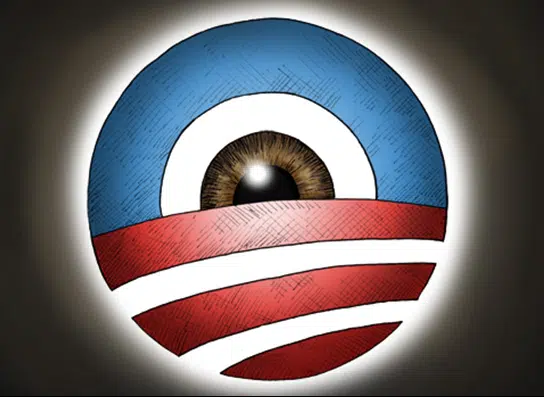By Howard Rich – There’s no joy in saying “we told you so.” Not when millions of Americans are beset by plummeting home prices, stagnant income levels, deteriorating job opportunities and rising consumer prices. And let’s not forget the trillions of dollars in debt that America’s politicians have saddled taxpayers with in an unsuccessful effort to alleviate these economic ills.
Free market advocates repeatedly warned political leaders of both parties regarding these inevitable “bailout byproducts,” but they didn’t listen. Instead, they rushed to reward their favored banks and bureaucracies for years of gross fiscal negligence — leaving taxpayers stuck with a scarcely-fathomable tab.
The only silver lining to this Keynesian tsunami? That the failure of the largest, costliest and least effective government economic intervention in human history could be the impetus for an urgently needed course correction — and a long-overdue debunking of one of the greatest myths in American history.
According to Barack Obama and the New Keynesians, years of unrestrained and unregulated “corporate greed” pushed America to the precipice of a second Great Depression. That’s when government rode to the “rescue” with more than $13 trillion worth of new spending, lending, loan guarantees and money-printing.
It’s a familiar narrative — one evoking all too common misconceptions about the policies responsible for the depth, duration and the eventual demise of previous economic downturns. Like its predecessors, however, this narrative ignores a flood of politically-correct, government-mandated lending that helped artificially inflate the nation’s housing bubble. It also ignores a steady increase in deficit spending in the years leading up to the recent recession.
This isn’t a past tense situation, either — the interventionist spigot is still flowing. Washington is currently staring down its fourth consecutive budget deficit of more than $1 trillion, while the Federal Reserve is just now winding down its latest $600 billion installment of “quantitative easing.”
Even Wall Street — which soaked up more than its fair share of the borrowed largesse — is finally saying enough is enough.
“They’ve done more than enough already,” one investment analyst recently said. “Any further stimulus only increases the long-term risk of inflation, which we already view as high.”
Indeed. Now if we could just wind the clock back three years — and $13 trillion.
In 2008, Keynesian economist Gauti Eggertsson published a paper in the American Economic Review which presented a theoretical basis for the Bush-Obama doctrine of “over-stimulation.” Eggertsson’s fundamental premise was that the interventionist policies of Franklin Roosevelt’s administration lifted the nation out of the Great Depression — ostensibly in contrast to the policies of Herbert Hoover.
Obviously, it’s not hard to find fault with Hoover’s disastrous response to the stock market crash of 1929 (especially the Smoot-Hawley Tariff Act of 1930 and the Revenue Act of 1932). But those were interventionist excesses — and Hoover’s contemporaries knew all too well that he was hardly the laissez-faire scapegoat he’s made out to be in government textbooks.
“That man has offered me unsolicited advice for six years, all of it bad,” Hoover’s predecessor Calvin Coolidge once said.
As Commerce Secretary to President Warren G. Harding, Hoover also recommended a massive federal response to the post-World War I depression. Fortunately Harding chose to ignore Hoover’s advice, and his hands-off handling of the 1920-21 depression is widely credited with ending that downturn in short order — just as Harding and Coolidge’s tax cuts paved the way for robust economic growth in the years that followed.
“The secret to the quick recovery was that the government generally stood aside and let the market recover by itself,” a 2005 report by The Cato Institute’s Chris Edwards noted. “Wages and prices adjusted, resources shifted to new areas of growth, profits recovered, business optimism returned, and investment rose.”
Even Keynesians, such as economist Robert J. Gordon, are forced to acknowledge that this economic recovery commenced in short order “despite the absence of a stimulative government policy.”
“Government policy to moderate the depression and speed recovery was minimal,” says Gordon. “The Federal Reserve authorities were largely passive.”
Obviously the virtues of “minimal” and “passive” government approach were not shared by Hoover and Roosevelt. Nor was the spectacular failure of Hoover and Roosevelt’s Keynesian approach heeded by Bush and Obama.
As a result of Hoover and Roosevelt’s mismanagement, the U.S. unemployment rate remained above 14 percent for ten years from 1931-1940. While it’s everyone’s hope that current elevated levels of unemployment won’t drag down our economy for such an extended time frame, the disastrous Bush-Obama response to the recent recession — and the looming specter of Obama’s socialized medicine law — don’t offer much cause for optimism.
“Told you so” — but let’s hope for the sake of our economy (and the taxpayers who support it) that our leaders have learned their lesson this time. We really can’t afford any more “stimulus.”
The author is chairman of Americans for Limited Government.







